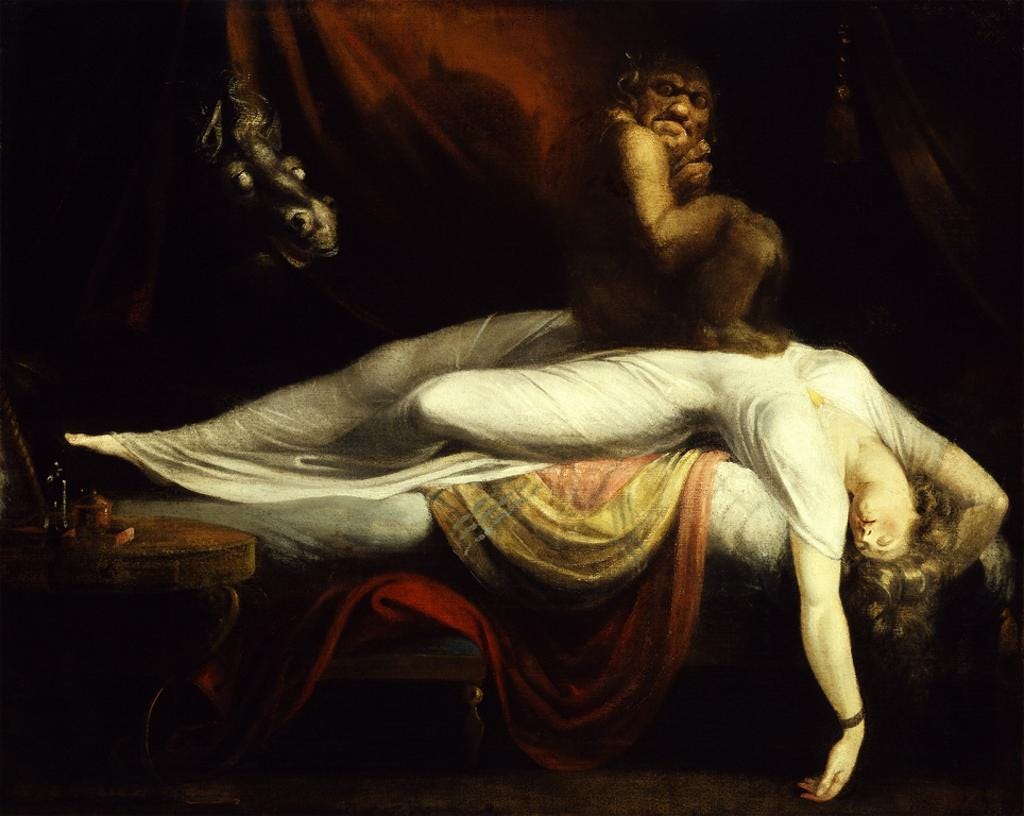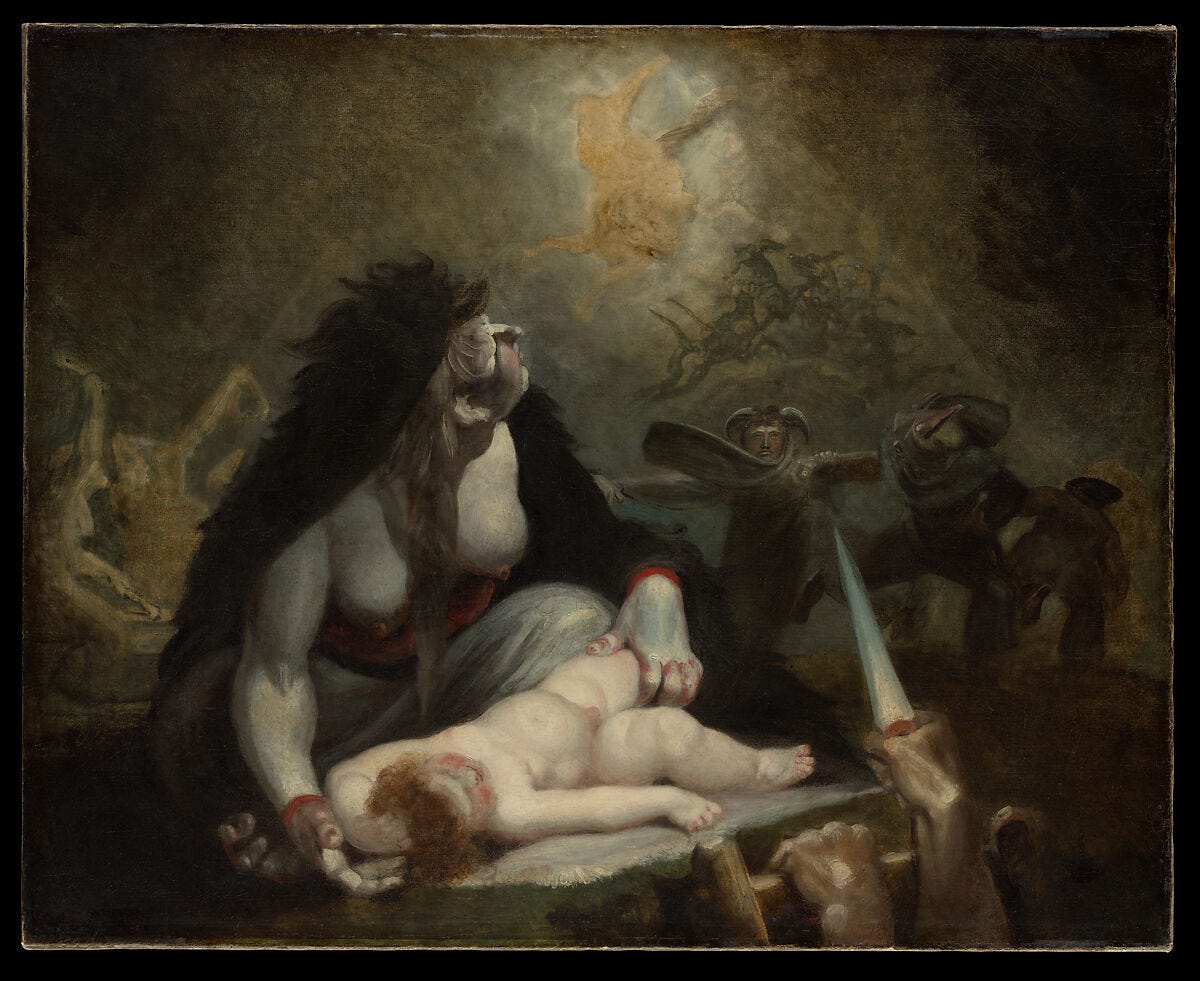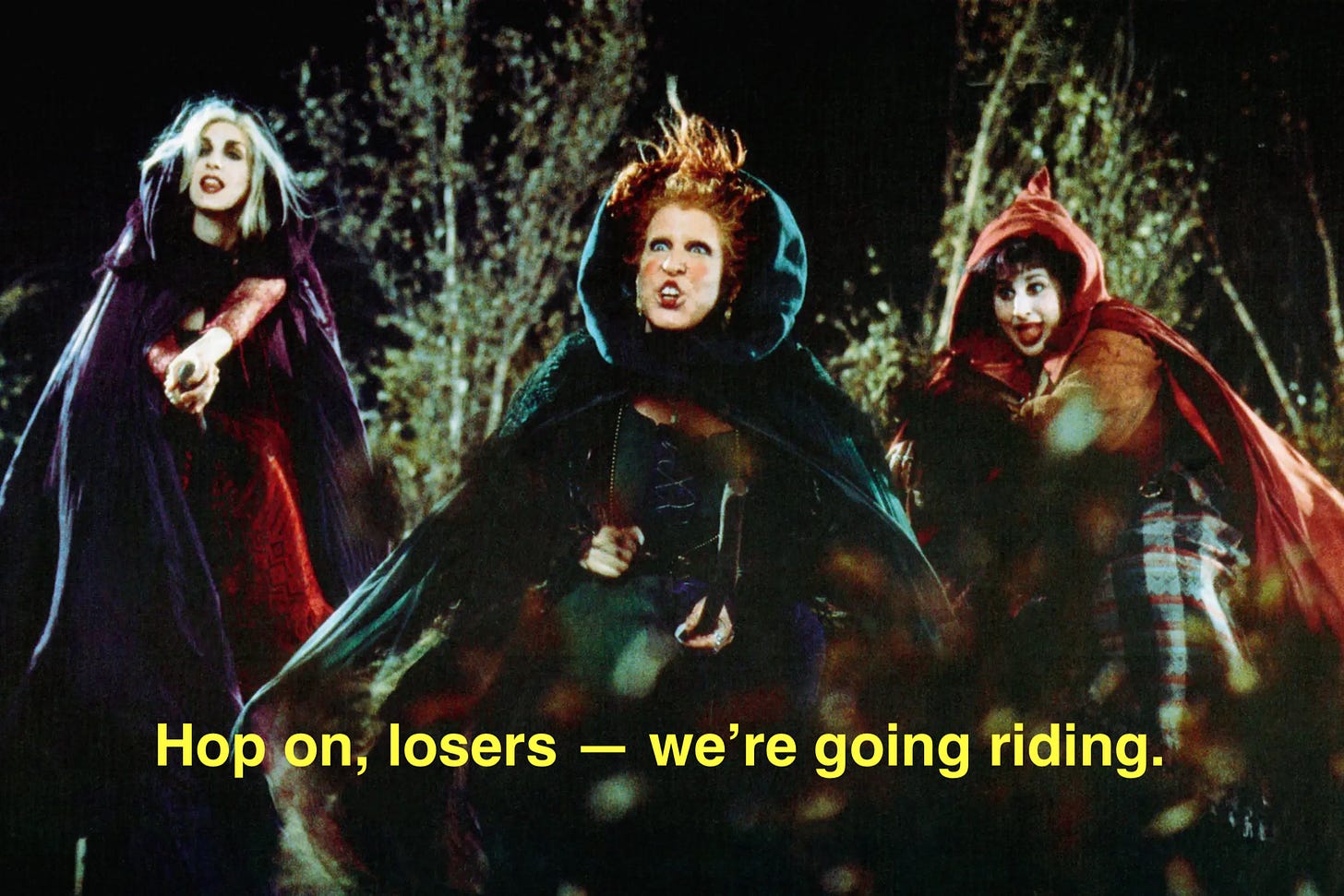I first noticed the Night Hag while teaching Milton’s Paradise Lost. These lines caught my attention one day, no doubt as I was frantically preparing for class:
Nor uglier follow the night-hag, when, called
In secret, riding through the air she comes,
Lured with the smell of infant blood, to dance
With Lapland witches, while the labouring moon
Eclipses at their charms.
This passage ticks a lot of boxes for me. Hags riding through the air? Secret meetings? Witches dancing under the moon? Yes, yes, and yes. I also love the trope of witches seeking “infant blood” — it’s deranged to the point of total absurdity. You can almost imagine a group of men sitting around like “listen up guys, we need to persecute some women — whaddya got?” And then some genius pipes up like, “okay, okay, this might be crazy, but hear me out: what if we said they EAT BABIES?!”
Once I started researching the Night Hag I realized that I had seen her — or versions of her — many times before. For one, she was hiding in plain sight in Henry Fuseli’s 1781 painting “The Nightmare,” an image I show to my students almost every time I teach the Gothic.

Holy smokes there’s a lot going on in this painting. It’s often cited as an example of the Gothic subconscious or, to quote Jerrold Hogle, “the archaic underworld of the self” (I love that phrase), and apparently it influenced a key scene in Frankenstein. Just like Gothic novels, Fuseli’s painting represents our darkest impulses and deepest fears. What disturbances lurk beneath the surface of this woman’s conscious mind? That terrifying gargoyle figure and horse head, that’s what!
As it happens, the terrifying gargoyle figure is a version of the Night Hag: a spirit or demon who causes sleep paralysis by sitting on your chest, also known as the Night Mare. One 18th-century text describes the Night Mare as:
…a Spectre of the Night, which seized Men in their Sleep, and suddenly deprived them of Speech and Motion.1
The Night Mare and Night Hag are roughly equivalent figures, often (but not always) used interchangeably. And in case you’re wondering about Night Mare/nightmare: yes, based on my cursory research, I think it’s very likely that the paralysis-inducing Night Mare is responsible for our current use of the word “nightmare” to mean “bad dream.”2
Before we move on from Fuseli’s painting, there’s one more Night Mare I want to point out. The title, “The Nightmare,” refers to the woman’s bad dream, and to the demonic figure on her chest, but also to the black horse head in the background — a night mare. Get it?
The Night Hag isn’t just a demonic chest-sitter, however: she’s also associated with witches and, sometimes, with Halloween:
For on Hallow-Mass Eve the night-hag will ride,
And all her nine-fold sweeping on by her side3
These lines, by 19th-century author Sir Walter Scott, describe the Night Hag using classic witch tropes that persist even today. But more specifically, Scott seems to align the Night Hag with something called the Hallowmass Rades, a Scottish legend about witches who gather on Halloween and ride around on brooms terrorizing the countryside and little Scottish children.
I’ll close with another painting by Henry Fuseli, this time with a more explicit reference to the Night Hag — his version of Milton’s scene (above) in which the Night Hag dances with Lapland4 witches.

I’m not really sure which one of them is meant to be the Night Hag (the figure in the foreground?), but it doesn’t seem like there are a lot of good choices here. Any way you slice it (sorry!), she looks like trouble.
Well, everyone, that’s all for today. Thanks for reading, and I’ll see you Friday with some new recs. Until then, watch your backs — or, maybe, your chests. The Night Hag is out there!
John Brand and Henry Bourne, Observations on popular antiquities, London, 1777.
For the language nerds, the term “night-mare” meaning “spirit or monster supposed to…produce a feeling of suffocation during sleep” occurs as early as 1300. But “nightmare” meaning “bad dream” doesn’t occur until 1562, leading me to believe that the earlier term influenced the later one. For what it’s worth, “night hag” doesn’t appear until 1626. All information courtesy of the Oxford English Dictionary, the best resource on the history of the English language!




